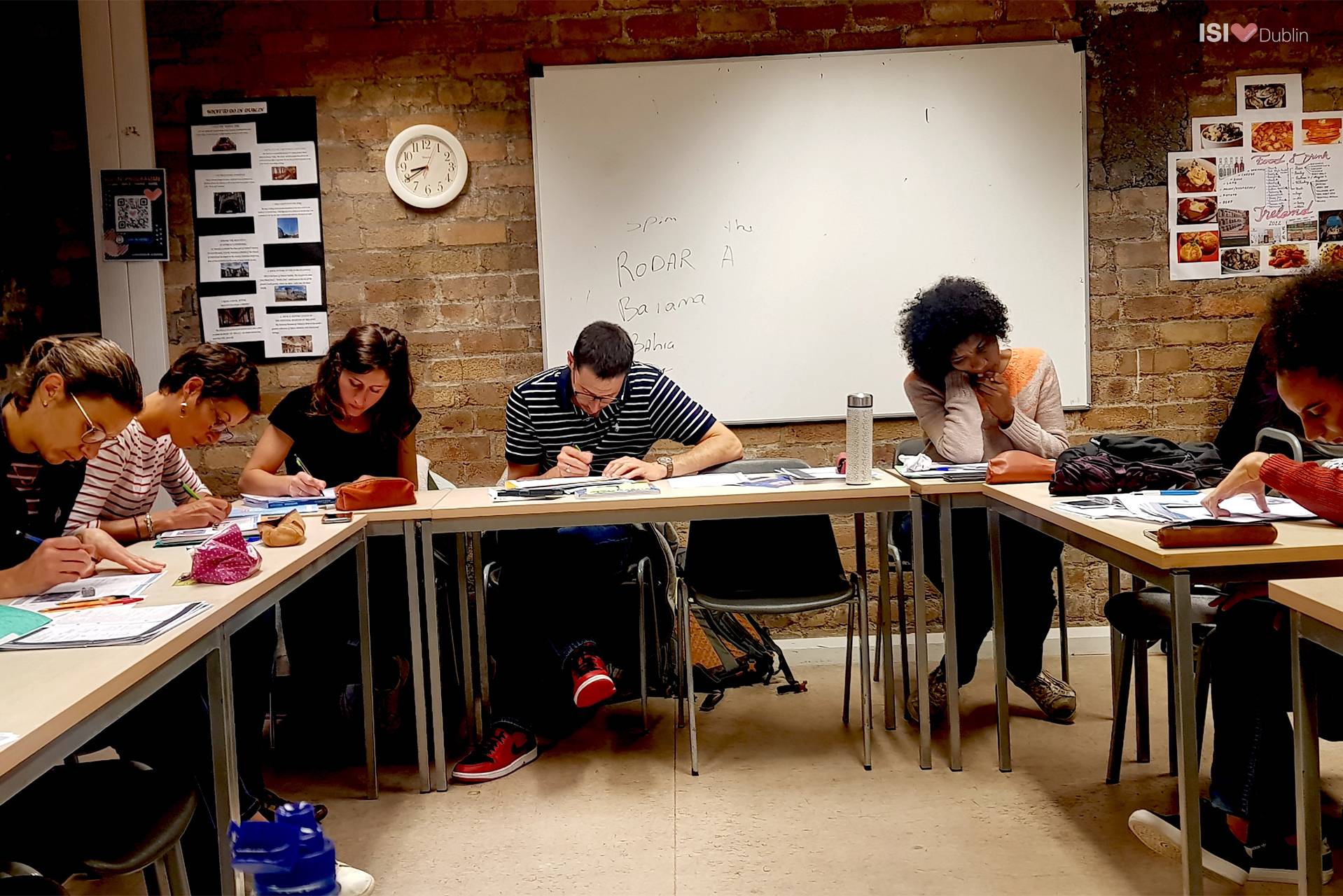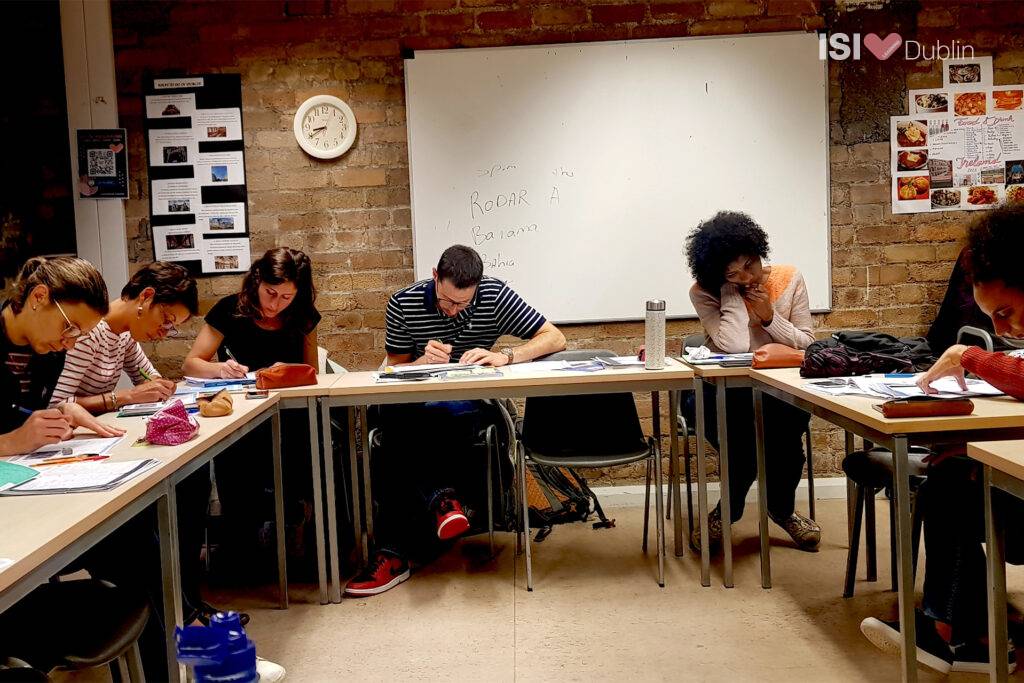With English examinations perpetually around the corner, whether it’s your end of term assessment or your in-house Trinity examination — or perhaps you’re even going for Cambridge FCE, CAE, CPE, or IELTS — it matters not, it is vital to know how you can prepare for these and how you will be assessed. Generally speaking, when it comes to English language examinations, you are assessed on four skills: Reading, Writing, Listening, and Speaking. However, one must remember that all of these skills require a good knowledge of English grammar, and, while the criteria may be different for each level, when it comes to Writing, the golden rule — no matter what your level — is that you first and foremost follow the foundations of English Word Order: SUBJECT + VERB + OBJECT; PLACE + TIME. So, come on, let’s take a look at how this works!

Subject + Verb + Object:
Unlike other languages, in English we cannot start a sentence with a verb (or action word: do, eat, pray, love, run, jump, sleep, and so on), unless it is a question (Do you want help?) or an imperative (essentially, a command), for example: “Don’t eat your dinner so quickly!” or “Tidy your room!”
In English, especially written English, we must start a sentence with a Subject. The Subject of a sentence can be: 1.) a Pronoun (I, you, he, she, it, we, they, for example, or this, that, these, those, and once again, it, when referring to something mentioned elsewhere in the discourse); 2.) a Noun (a word, other than a pronoun, used to identify any of a class of people, places, or things [these are known as Common Nouns, e.g. cities], or to name a particular one of these [these are known as Proper Nouns, e.g. Dublin]; in which case, you’ll note that the first letter of the word is capitalised); or 3.) a Noun Phrase (a group of words which, when joined together, constitute one thing, e.g. the city that I live in).
Ignoring the placement of adverbs for the moment, which we’ll deal with in a separate post, the Subject of an English sentence is immediately followed by a Verb + Object. We know that verbs are action words, as outlined above, but what exactly is an Object?
Well, the Object of an English sentence is a bit like Romeo to Juliet: the Object belongs to the Verb just like Romeo belongs to Juliet, it is the object of the verb’s affection, if you like. So, this is why the Verb and the Object are usually together in an English sentence: we don’t want to put anything in between them, now, do we — anything that would get in the way of that affection? No, we most certainly don’t!
So, this is how we construct our English sentences:
Subject + Verb + Object
I (the subject of sentence) love (verb) . . . what is the object of my love? Why, Romeo, of course! How much do I love him? Oh, very much! Therefore, this is how I express it:
I (Subject) love (Verb) Romeo (Object) very much.
(not I love very much Romeo)

Let’s look at some other examples:
She (Subject) speaks (Verb) English (Object) very well.
(not She speaks very well English)
He (Subject) borrowed (Verb) fifty euro (Object) from his brother.
(not He borrowed from his brother fifty euro)
We (Subject) met (Verb) some friends (Object) at the airport.
(not We met at the airport some friends)
They (Subject) watch (Verb) football (Object) every day.
(not They watch every day football)
Place + Time:
In English, Place (where?) is usually before Time (when?) in writing: your mnemonic or memory device for this is P comes before T in the alphabet! So, we say:
I (Subject) teach (Verb) English (Object) at ISI (Place) from Monday to Friday (Time).
(not I teach English from Monday to Friday at ISI)
I (Subject) love (Verb) reading books (Object) in the garden (Place) in summer (Time).
(not I love reading books in the summer in the garden)
It’s important to remember, however, that a lot of the time the Object of an English sentence will be Place + Time. For example:
We (Subject) went (Verb) to a party last night (Object: Place + Time).
Hannah (Subject) walks (Verb) to work every day (Object: Place + Time).
It’s also important to remember that the Place and Time expressions can be quite abstract. For example:
We (Subject) arrived (Verb) there very late (Object: Place + Time).
I (Subject) ate (Verb) my breakfast (Object) in bed (Place) this morning (Time).
As with every other skill, writing requires practise. Writing sentences every day following this formula (SUBJECT + VERB + OBJECT; PLACE + TIME) will doubtless not only improve your written English, but your spoken English too. Hmm, . . . now, where to place those adverbs? Find out in Part II of this series of blog posts on Exam Tips for Writing!


Pingback: ISI Dublin │ The "Passive Voice" made Easy by Rosie!